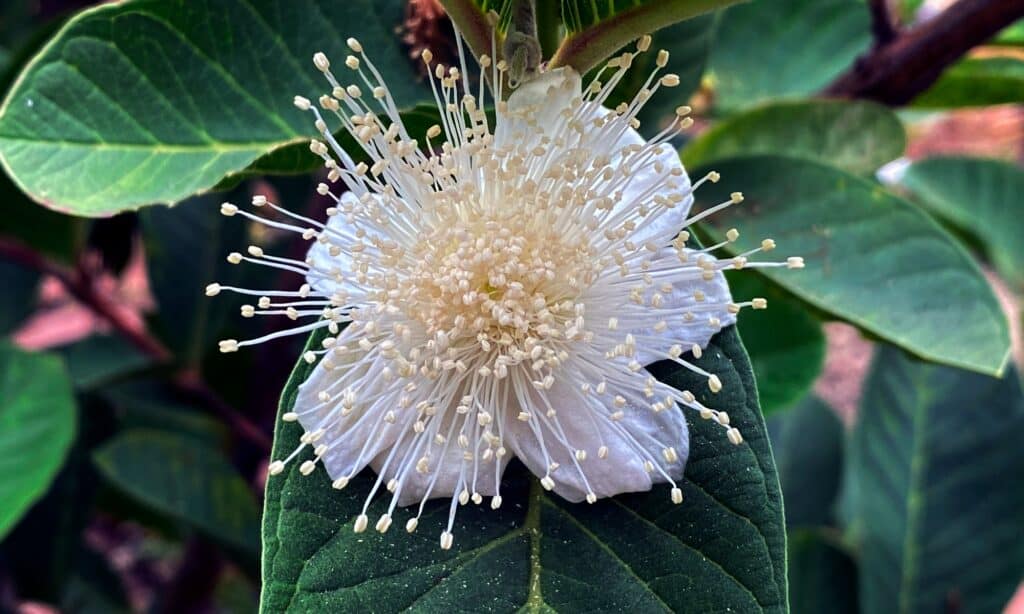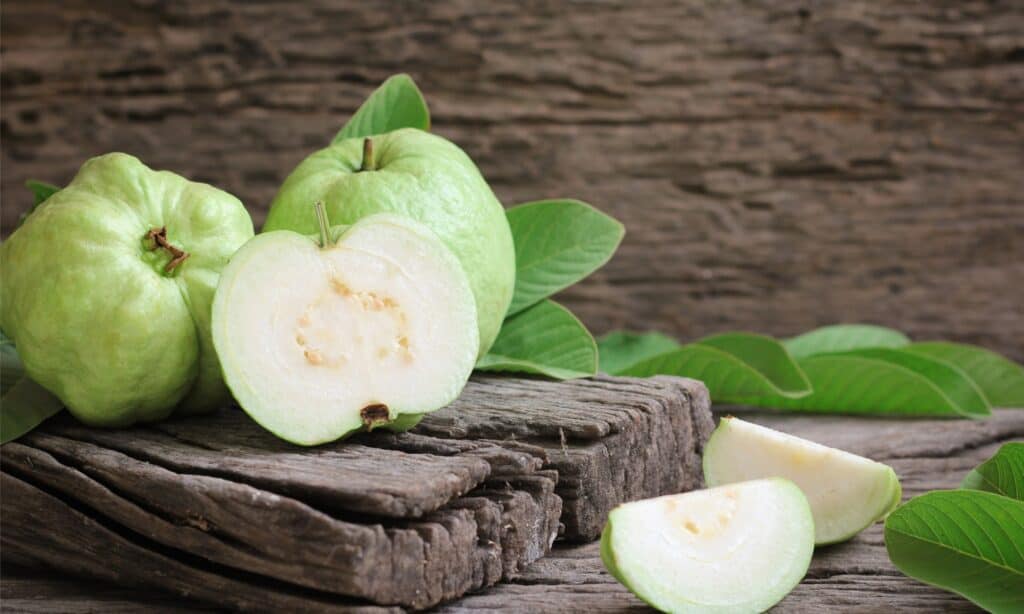When it comes to comparing guayaba vs guava, what are the differences between these two fruits? You may have eaten guava in a confectionary capacity, or perhaps you’ve had the chance to consume raw guava fruit. But how does guava compare to guayaba in flavor, and are these truly two different plants?
In this article, we will compare and contrast guayaba and guava so that you can truly understand whether or not they are different. We will go over the description of this tropical plant, as well as what it is typically used for. Finally, we will give you some tips on how guava trees prefer to grow, in case you are interested in cultivating one for yourself. Let’s get started!
Comparing Guayaba vs Guava

| Guayaba | Guava | |
|---|---|---|
| Plant Classification | Psidium guajava | Psidium guajava |
| Description | Reaches up to 25 feet tall with a unique bark appearance that flakes when touched. Leaves are veined and deep green, growing opposite each other on branches. Flowers are fragrant and typically white in color, with multiple stamens. | Same as guayaba |
| Uses | Popular fruit eaten in a variety of ways, including raw, in beverages, and more. Some medicinal uses, but very few compared to its culinary uses | Same as guayaba |
| Origin and Growing Preferences | Native to Mexico, Central America, and Peru; needs full sun and subtropical climates in order to flourish. Some varieties can handle cold temperatures for a period of time, but this is typically only possible for adult trees | Same as guayaba |
| Name Origins | Common Spanish name for guava fruit, though this has origins in ancient indigenous language from South Africa | Originated sometime during the 16th century; common English name, derived from Spanish origins |
Key Differences Between Guayaba vs Guava

The average guayaba or guava tree reaches up to 25 feet tall, occasionally exceeding 30 feet in subtropical climates.
©iStock.com/NancyAyumi
There are no real differences between guayaba and guava besides the origins of their names. Guayaba and guava are two names for the same plant, classified as Psidium guajava, or common guava. However, the name guayaba refers to the common Spanish name for guava, while guava is used in many English speaking regions of the world.
Let’s talk about the guava or guayaba tree in more detail now!
Guayaba vs Guava: Classification
Given that they are indeed the same plant, guayaba and guava can be classified the same way. While there are close to 100 different species or cultivars of the guava plant, the most popular guava tree is classified as Psidium guajava, or the common guava. This plant is also commonly known as the apple guava or the yellow guava fruit.
Guayaba vs Guava: Description

Flowering in springtime, guayaba and guava trees typically have white, fragrant blooms.
©iStock.com/AdelMBautista-AdelsFotos
There are a number of guava varieties, all producing different types of fruit and growing to different heights. However, the average guayaba or guava tree reaches up to 25 feet tall, occasionally exceeding 30 feet in subtropical climates. Guava trees have a unique flaky bark that peels to reveal light green flesh beneath. The leaves are of a classic shape, with deep veins and growing opposite each other.
Flowering in springtime, guayaba and guava trees typically have white, fragrant blooms. These flowers have multiple stamens, ideal for pollinators to find and assist in fruit production. Speaking of fruits, the guayaba or guava tree has fruits in varying sizes and colors, depending on the variety. Some are the size of limes, while others grow larger than oranges. These fruits are commonly found in white, pink, and red colors, while occasionally found in green.
Guayaba vs Guava: Uses

Guayaba or guava fruits have a great flavor to them, ideally eaten raw or in beverages.
©iStock.com/Murilo Gualda
Guava or guayaba fruits are the most commonly used part of the guava tree, as the wood isn’t strong enough for building. However, guava branches and wood can be used to smoke meats and fish, imparting a delicious flavor. Guayaba or guava fruits have a great flavor to them, ideally eaten raw or in beverages. The guava plant has been used medicinally in the past, but its primary use nowadays is simply as a tasty and sweet fruit!
Guayaba vs Guava: Origin and How to Grow
Guayaba and guava trees originated in the same location, given that they are indeed the same plant. There’s evidence to suggest that the guava tree originated in a few key locations, namely Peru, Mexico, and Central America. These subtropical trees thrive in warm climates, preferring soil with plenty of nutrients and minerals. Growing a guava tree in full sunlight is recommended so that the flowers and fruits produce at their maximum capacities.
Guayaba vs Guava: Name Origins

Growing a guava or guayaba tree in full sunlight is recommended so that the flowers and fruits produce at their maximum capacities.
©Smile Studio AP/Shutterstock.com
The primary difference between calling this plant a guayaba or a guava tree lies in the origins of these names. For example, the common name of “guava” originated sometime during the 16th century, while guayaba has Spanish language origins. In fact, guayaba may even have origins in an indigenous language as well, native to South Africa.
Up Next…
The photo featured at the top of this post is © iStock.com/Murilo Gualda
Sources
- Breeding Guava (Psidium guajava L.), Available here: https://link.springer.com/chapter/10.1007/978-0-387-71201-7_3
Thank you for reading! Have some feedback for us? Contact the AZ Animals editorial team.






